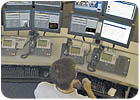
“The video verification market from Westec’s perspective is kind of a rapidly evolving market space,†declared Larry North, vice president of product development for Westec Interactive, West Des Moines, Iowa, which specializes in video verification largely for commercial retail clients. “It seems to be driven by various municipalities either having success or instituting different types of regulations with respect to how the authority will respond to various types of burglary and security alarm systems.â€
North’s observation seems borne out by new fines in Pierce County in Washington near Tacoma. At the beginning of this year, Pierce County established fines for false alarms that would be charged to alarm companies. But the county is interested in video verification. So is Los Angeles County.
The fines in Pierce County are $250 for a false burglary alarm and $125 for false robbery, panic and duress Alarms. Additionally, a $50 fee is charged for alarm cancellations.
Central stations will be required to bring all existing alarm systems into compliance with the ordinance by June 30 for one-plus duress codes and single-action, non-recessed button alarm activation devices.
Jim Jenkins, chief of operations for the Pierce County Sheriff’s Department near Tacoma, Wash., is unaware of any video verification of alarms in progress in his area but thinks most alarm verification in his area currently is audio-only.
“We were going to accept audio and video as the functional equivalent of a verified response – that was part of our original policy,†Jenkins stated. “The difference is we’re looking at an alarm and see somebody breaking in, that is a burglary-in-progress call. But if it’s just George hanging a picture on the back door, that is not an alarm, and you should have known, and we’ll fine you for a false alarm.â€
Jenkins thinks that with more verification of alarms, the number of fines would be reduced.
“If this worked, you’d see a reduction in the cost,†Jenkins maintained. “I’m not interested in the fine – I’m interested in not going to them [false alarm calls]. We’re losing time we’ll never get back. The whole idea is not to lose that time.â€
His department has been working to interest alarm companies in verification methods and has seen demonstrations of video verification. “If it does come along as attractive and cost-effective, they’d be foolish not to go with it because that is what customers want,†Jenkins said of video verification.
Michael Walker, a lieutenant in the Los Angeles County Sheriff’s Department who is the department’s technology coordinator in the technical services division, also does not see much video verification in his area.
“The technology is new, and to the best of my knowledge, not widely used by alarm companies in southern California,†Walker said of video verification. However, he is enthused about it and has seen demonstrations of new systems.
“Video verification would virtually eliminate false alarm calls, which are the majority of our current responses,†he admitted. “There are a lot of benefits to consumers and law enforcement agencies. For years, we’ve been responding to calls for service and alarm calls. They are not a priority call, and they really should be.â€
Central stations and not police departments should determine whether an alarm is false, thinks Keith Jentoft, general manager, RSIalarm, Minneapolis, Minn. “Video verification for commercial systems have been around for quite a few years,†he noted.
“Video verification is a tool that allows monitoring stations to filter false alarms instead of squad cars and cops,†he pointed out. “If it’s done properly, the monitoring stations now have a tool. They don’t eliminate false alarms because they come into the station, but you eliminate the false dispatch – that’s really what anybody cares about. We eliminate the false dispatch because the monitoring station filters false alarms at their end.â€
Butch Neel, president of security dealer SNC Inc., Hutchinson, Kan., currently has no customers who use video verification but is enthused about the technology.
“At the present time in dispatching we use it very little, but we haven’t had the equipment lately that made it easy,†Neel explained. If the equipment to do video verification can be lowered in cost and be easier to install, “The customers we are talking with right now are extremely interested,†he maintained.
It is too early for him to know what any increase in monitoring costs might be. “Monitoring rates may be a tad higher,†he estimated. “It’s a little more operator-intensive than a regular standard alarm system, because you have interaction with the equipment.â€
Regarding increasing residential monitoring fees, Jentoft of RSIalarm predicted, “If you have a verified alarm, you get better service, so I think that’s what dealers get – $5 to $10 more [monthly] for video monitoring.â€
North of Westec, which had a residential division but now concentrates mostly on commercial installations, thinks equipment cost is the determining factor for residential use of video verification.
“The question is, when is it going to trickle down into the more mainstream residential markets and become affordable enough and easy enough to use so that somebody who may be triggering a lot of alarms is able to have video verification alongside of that alarm panel?†North asked.


